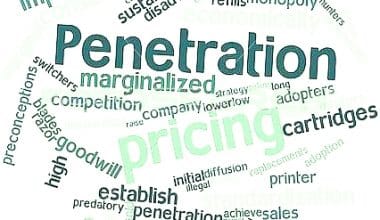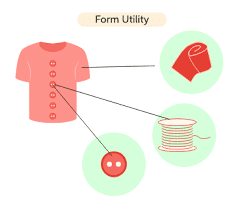Conflicts can occur not just between friends and family members but also between co-workers, customers, and clients. The more you connect or work with people, you will probably have to figure out the need to handle conflict the right way. Conflict resolution skills are efficient in any workplace, organization, or firm. However, conflicts are essentially arbitrary, which means it doesn’t matter who “wins” as long as the problem is fixed and everyone can return to work. However, some conflicts are the result of genuine disagreements over how an organization should operate. in this article, we will explain the meaning of conflict resolution, its process, skills, strategies, and also conflict resolution training.
Conflict Resolution
The process of controlling a problem and negotiating over a solution is called conflict resolution. It is the process of ending a fight and coming to an agreement that makes everyone happy. Conflict is part of being human, which is a good thing. Conflict resolution does not intend to prevent fights from occurring. Instead, conflict resolution skills are used to help people talk to each other, understand each other better, and keep their emotions in check. Your organization could suffer if you don’t know how to handle conflicts well at work. If you don’t know how to deal with conflicts well, you’ll only make things harder for yourself when they happen. Not only will it take longer to solve a problem, but it could also lead to a bigger fight, which could have a big effect on how the two people feel about each other.
Conflict Resolution Process
The process of resolving a conflict can be either informal or formal. It is the way that two or more people try to settle a conflict in a peaceful way.
Here is a 10-step process for conflict resolution that will not only end the current fight but also help you figure out why problems happen at work and how to stop them in the future.
- In the process of conflict resolution, the parties involved acknowledge that a problem exists.
- Agreement on both sides to deal with the problem and find a solution.
- ability to understand the opposing individual or group’s point of view and empathize with their worries
- Identifying changes in attitude, conduct, and approach to work on both sides will reduce unpleasant feelings
- Recognizing conflict-related triggers.
- Interventions by third parties to mediate, such as human resources representatives or higher-level management
- A willingness to compromise on the side of one or both parties.
- Agreement on a strategy for resolving disagreements.
- Monitoring the effects of any change agreed upon.
- Disciplining or terminating employees who resist conflict resolution efforts.
.
Skills for Conflict Resolution
Anyone in management, but especially new managers, needs to know the skills for handling conflicts productively. This is the only way to keep them from slowing down the professional growth of their employees. Here are the five skills of conflict resolution.
#1. Active Listening
One of the skills required in conflict resolution is the ability to listen to what the other person has to say. Of course, it’s easy to think that you’re right and ignore what the other person is saying, but that doesn’t help solve the problem. Instead, it’s important to listen actively.
Active listening means paying attention to what the other person is saying, staying quiet while they talk, and paying attention to how they say things. Genuinely listening to their inquiries and worries with open ears demonstrates that you care about what they’re saying, creating a sense of respect. You should always try to solve a conflict with an open mind so that you can really understand the other person’s point of view.
If someone says something in a certain way, you should say it back to them in the same way. If you don’t understand what they said, ask them to explain. This shows that you listened to them and are interested in resolving the issue at hand. During a conflict, one of the most important skills you can have is the ability to actively listen to the other person.
#2. Communication
Communication is essential in any relationship, whether professional or personal. How can you expect others to understand how you feel if you don’t convey your thoughts and feelings to them?
Although it may be tempting to shut down after an argument, this is not the best way to deal with the issue. You must nurture the relationship to ensure that it heals after the disagreement by keeping an open line of communication for both parties. Everyone involved in the conflict should feel safe enough to say what they think and how they feel in order to find a solution. Communication is also essential for ensuring the relationship’s long-term viability. You want to create an inclusive workplace climate in which no one feels judged or scared to speak up about a disagreement or debate. Open communication can also help keep a problem from escalating.
#3. Don’t Place the Blame
During a conflict, the last thing you want to do is blame each other. You shouldn’t point fingers because it can make the problem and the conflict worse. Instead, create a safe workplace in which no one person is blamed. It is one of the most important skills to consider during the process of conflict resolution.
You should also avoid going on the offensive, as this can make finding a solution more difficult. Instead, everyone should be given an equal opportunity to speak without being silenced. It is critical to allow everyone to express their opinions and thoughts.
When there’s a problem at work or in your personal life, everyone should work together to solve it. No single person should be held accountable for finding a solution. Working together to discover a solution would not only speed up the resolution of the problem but also bring everyone together and encourage collaboration.
#4. Remaining Calm
During an argument, our natural reaction is to let emotions like anger and frustration take control, but this rarely results in a resolution. In a conversation, your tone of voice may go a long way, which is why it’s critical to remain cool when resolving a problem. Even though it may be hard to keep your cool during a fight, it is important not to make things worse.
This is also why it’s a good idea to wait a few minutes after the initial quarrel before continuing the argument. It’s easy to let your emotions take over and say things you don’t mean in the heat of the moment. Allow yourself some time to process your feelings before jumping into conflict resolution. This will give you both a chance to think about the conflict and think critically about what happened and why. When it comes to dispute resolution, you should be calm and composed, and you should organize your thoughts ahead of time so you know exactly what to say and how to say it.
#5. Agreement.
The mediator has to get both parties to shake hands in agreement to resolve their conflict. The goal is to come to an agreement through negotiations. Some mediators even write up a contract that spells out what needs to be done and when. But it might be enough to just meet with the people and ask them, “What action plans will you both put in place to stop conflicts from happening in the future?” “What are you going to do if problems come up in the future?”
Conflict Resolution Strategies
There are several strategies in conflict resolution. All of these strategies are often used in court, but they can be used to solve any kind of conflict, even ones that happen at work. Following these methods can help secure a favorable resolution to the issue. Everyone handles problems differently, but here are some conflict resolution tactics that may work for you:
#1. Negotiation
It can be hard to negotiate, but it is one of the key strategies for conflict resolution. When you negotiate, you have to put aside your differences and work together to find a solution. Negotiation helps you build better relationships at work because it shows that you’re willing to give up your ideals to find a solution that works for everyone. When you can work out a solution with someone, you give yourself an advantage at work and make yourself more productive.
#2. Meditation
Most people remember having a mediator in elementary school, but this strategy can still be used in the workplace. Bringing in a neutral, unbiased third party who can help you decide is part of the mediation strategy. Sometimes, all you need to solve a problem is to talk it over with someone else. It is one of the most effective strategies in conflict resolution
You can get a completely unbiased opinion of the situation from a mediator. For example, if you and a coworker are fighting about a project, you can ask a different coworker who has nothing to do with the project to be your mediator. So, they can give an opinion that is based only on facts and not on how they feel about something.
#3. Arbitration
In order to resolve the issue, a third party will serve as the “judge” in the arbitration process. This person will consider the arguments from both sides before making a judgment based on the evidence that is provided. The people involved in the dispute won’t be able to argue against this decision, which will be final. They could attempt to bargain over some parts of the choice, though.
#4. Litigation
In litigation, both sides of the argument will go before a judge or a judge and a jury. The judge, and jury, will listen to both sides, weigh the evidence, and then make a decision. People who are not directly involved in the conflict can be the judge and jury.
Conflict Resolution Training
The goal of this training is to help staff members develop strategies to deal with potentially violent situations and understand how to handle conflict resolution the right way. Conflict resolution training is part of a plan to deal with a conflict against employees at work, and it is meant to help all employees who deal with the public and may have to handle potentially violent situations.
The learning outcomes are:
When the training is over, participants will be able to:
- Explain what conflict is and why it occurs. Explore the role of communication and how to use it successfully.
- Learn how to calm down and diffuse a situation to lower the chance of a conflict.
- Learn how to keep yourself safe during a violent event.
- Explain how to handle violence in the workplace and what the law says about it.
- Explain what to expect from colleagues and organizations following a violent incident, as well as the available support for people involved.
What Are Methods of Conflict Resolution?
Some Conflict Resolution methods & strategies
- Speak plainly. As long as there is no threat of physical violence, talk to the person you have a problem with directly.
- Choose an appropriate time. Prepare ahead of time.
- Don’t blame or call others names.
- Provide details.
- Actually listen.
- Demonstrate that you are actively listening.
- Discuss everything.
What Are the 5 Principles of Conflict Resolution?
The principles of conflict resolution are:
- Listen attentively. The most crucial aspect of communication is listening.
Consider your options before acting. - In a quarrel, we have Attack the Problem…. Attack the problem, not each other! Conflict is highly emotional.
- Accept Responsibility.
- Communicate Directly.
- Look for Common Interests.
- Focus on the Future.
What Are the 4 Elements of Conflict?
- Propoganda.
- Alliance.
- Human Rights.
- Political Geography.
What Are the 7 Types of Conflict Resolution?
There are major types of conflict resolution, according to the Thomas-Kilmann Conflict Mode Instrument (TKI), which is used by human resource (HR) professionals all over the world—
- collaborating
- competing,
- avoiding,
- accommodating,
- compromising.
- emphasize.
- build trust
What Are 7 Tips of Resolving Conflict?
- Schedule a discussion time.
- Invite a Third Person.
- Identify the main issue.
- Establish common goals.
- Discuss ways to achieve goals.
- Agree on a course of action
- Determine resolution roles.
What Is Conflict Prevention?
Conflict prevention can be used temporarily to buy more time or permanently to solve a problem. Inasmuch as the person avoiding the dispute submits their own desires to the party they are in conflict with, the latter may be identical to simple submission to the other party.
Related Articles
- BEST ONLINE MANAGEMENT COURSES: Best Online Courses
- The Top Effective 2023 Strategies for Resolving Conflict
- IRS Attorney: Salary, Jobs, Fees, Best Options & All You Need
- GOAL VS RESOLUTION: Understanding the Difference Between Goal and Resolution.
- The Importance of Resources for the Success of Any Business






